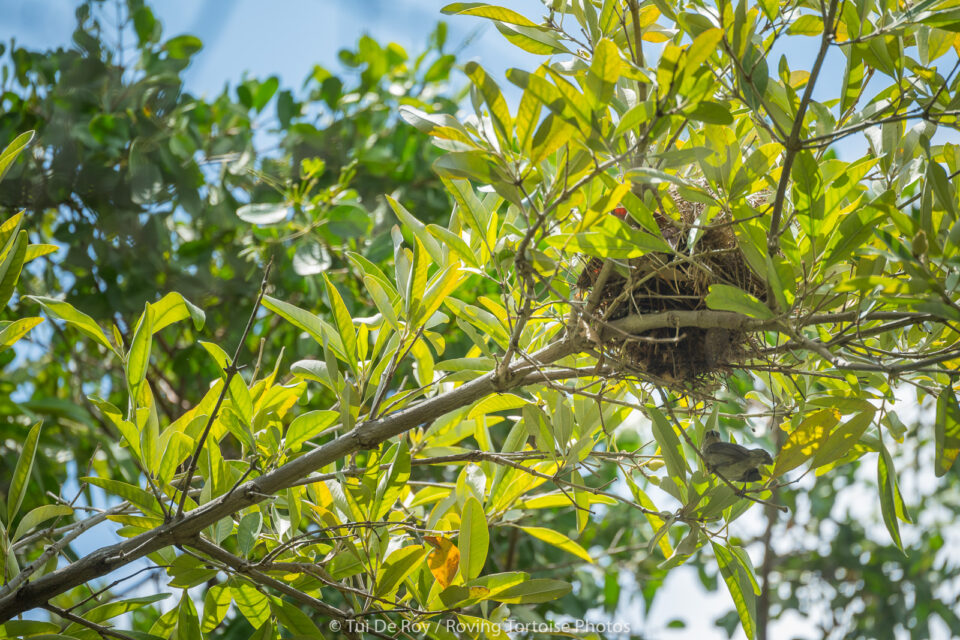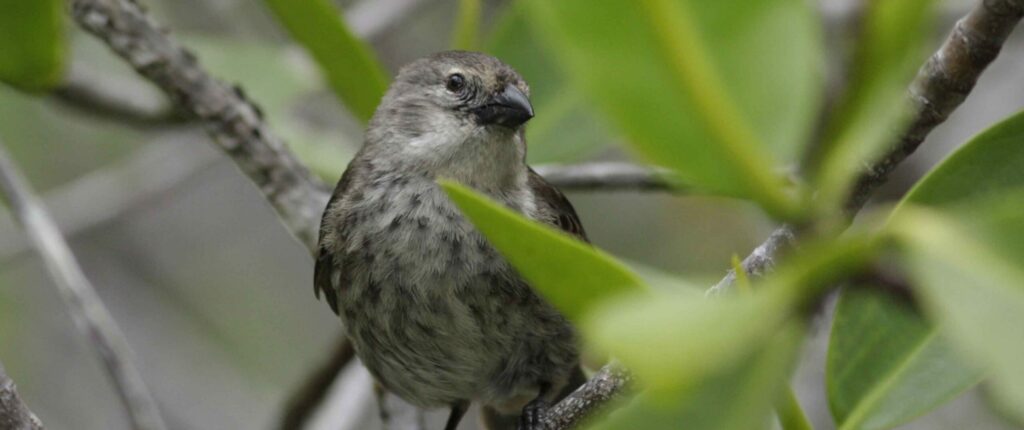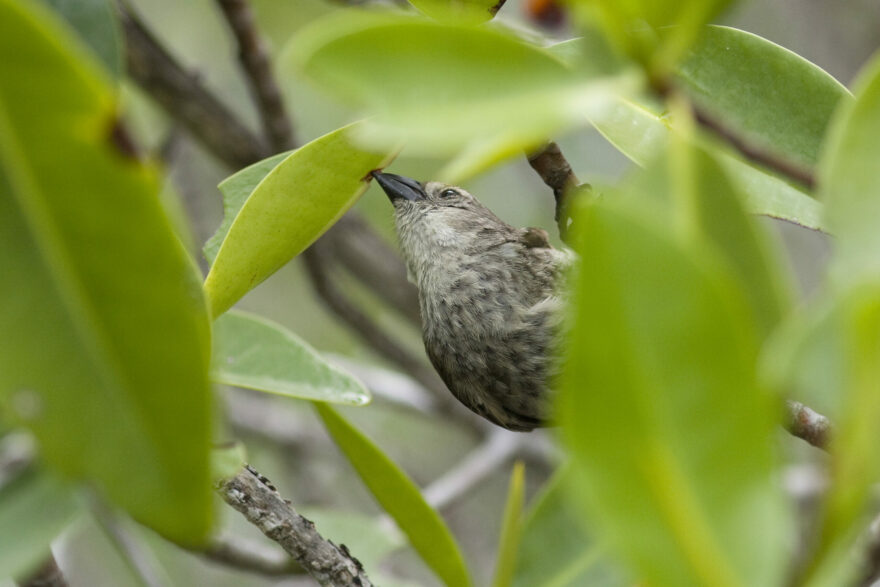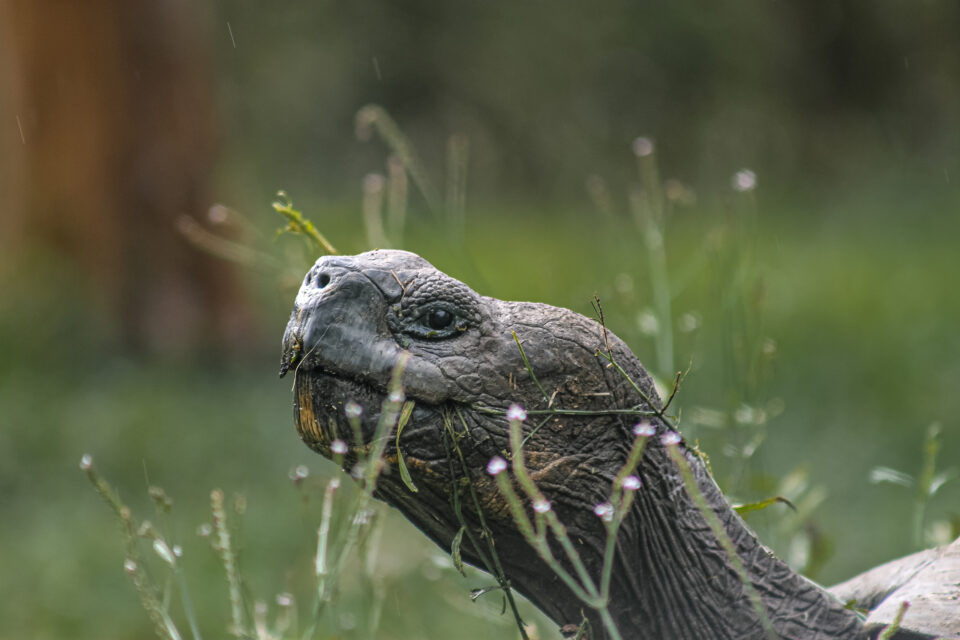
Common name:
Mangrove finch
Scientific name:
Camarhynchus heliobates
Spanish name:
Pinzón de manglar
Conservation status:
Critically Endangered
Average size:
14 centimetres
Maximum size:
15 centimetres
Average weight:
18 grams
Overview
The mangrove finch belongs to the group of birds commonly referred to as ‘Darwin’s finches’, and is endemic to the Galapagos Islands. It has highly specific habitat requirements, with breeding populations occurring only in two small areas of pristine mangrove forest on the north-west coast of Isabela. Its extinction across much of its former range makes the mangrove finch one of the most range-restricted birds in the world, with only around 100 individuals remaining.
Adult mangrove finches have dull brown plumage, becoming more olive-toned towards the rump, and whitish, lightly streaked underparts. Males develop black feathers on the head and neck after several annual moults. The beak is long and pointed, and, like many of Darwin’s finches, has evolved for efficient food collection. Mangrove finches use their delicate beaks to lift the scales of tree bark, allowing them to retrieve insect prey from underneath, as well as to probe through the leaf litter.
Mangrove finches in Galapagos
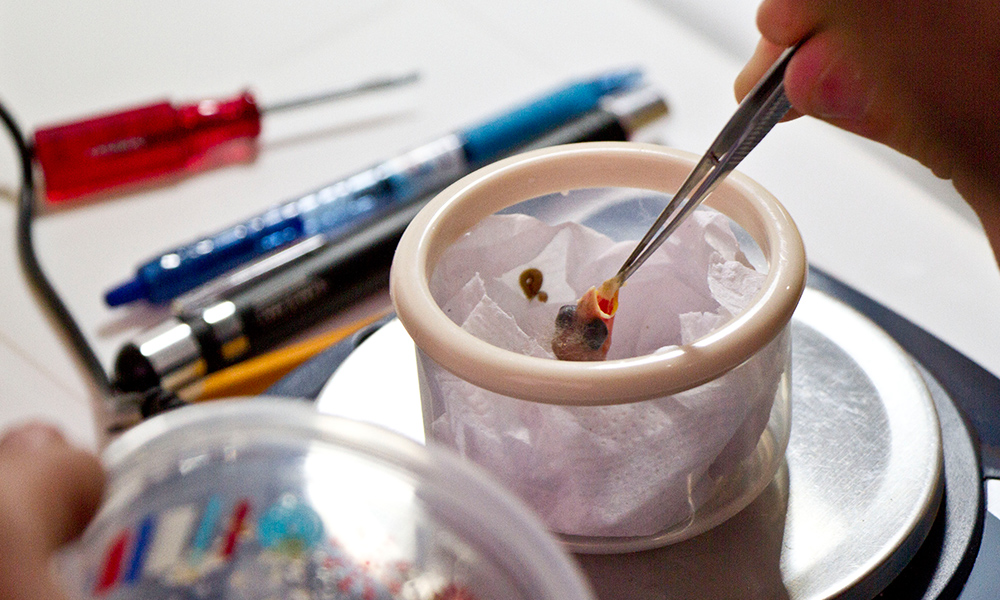
Read more about mangrove finches...

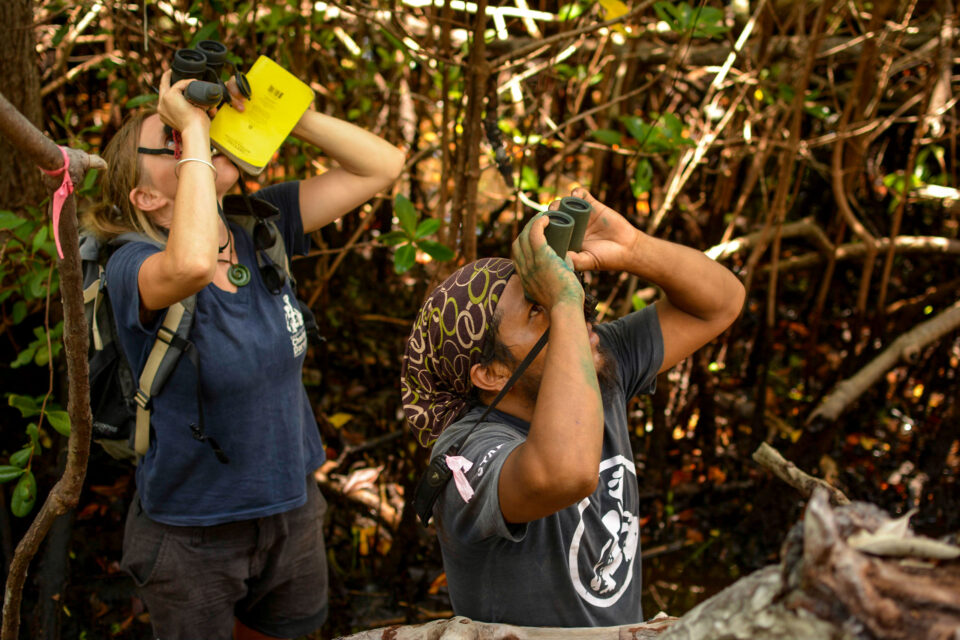
Mangrove Finch Project update
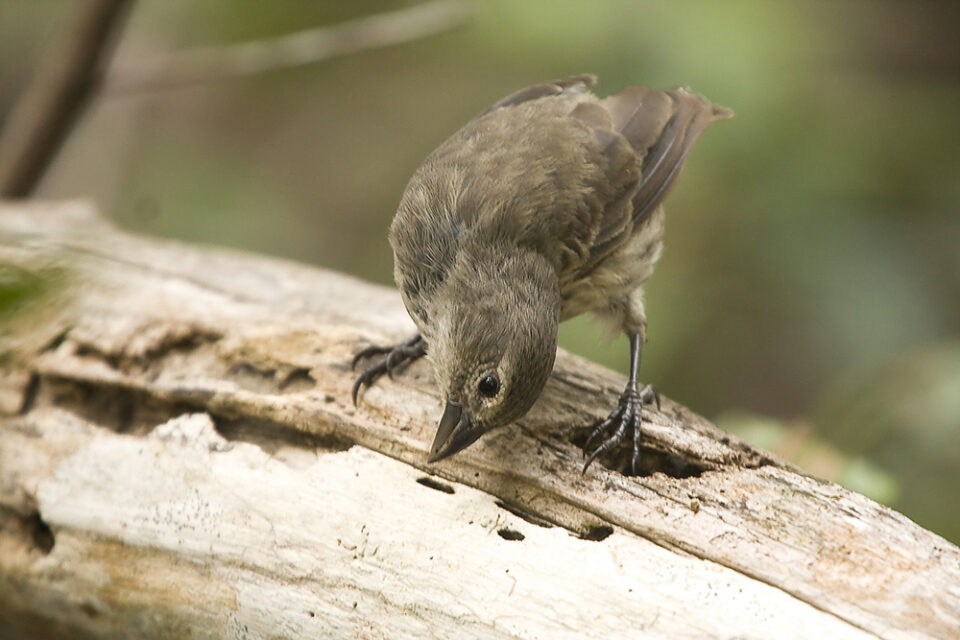
Mangrove Finch Project update
